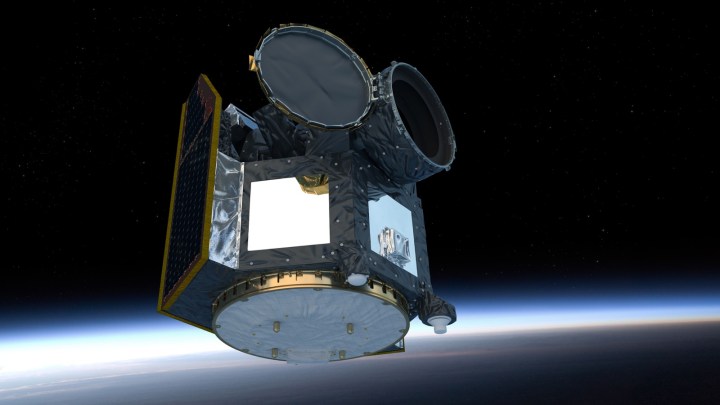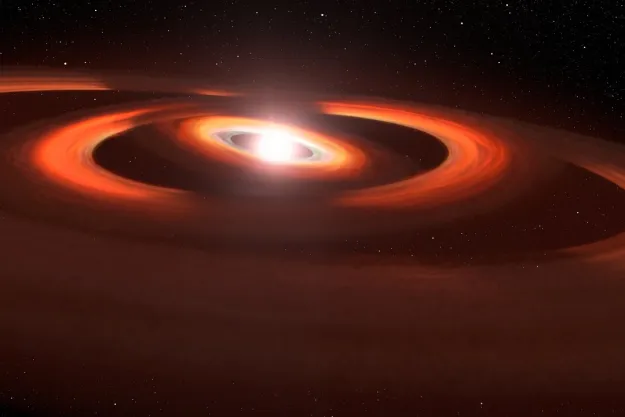The European Space Agency (ESA)’s CHEOPS satellite has discovered four new exoplanets — and they are a hard-to-detect type called a mini-Neptune. These planets are notable because they are the “missing link” between rocky Earth-sized planets and ice giants like Neptune. They are thought to be very common in our galaxy, but they are hard to spot because they are small and cool compared to the big, bright hot Jupiters which are most commonly detected by exoplanet-hunting telescopes.
Mini-Neptunes do orbit close to their stars, typically being found closer to their stars than Mercury is to the sun. However, hot Jupiters orbit even closer — which gives them very high surface temperatures of over 1,000 degrees Celsius. Mini-Neptunes have relatively cooler surface temperatures of around 300 degrees Celsius.

The first evidence for the presence of the four exoplanets was first provided by NASA’s Transiting Exoplanet Survey Satellite, or TESS, which saw how the brightness of various stars dropped slightly, suggesting the presence of a planet in an event called a transit. However, to confirm that a planet is definitely present, another telescope needed to observe the host stars for a longer period of time — which CHEOPS was able to do.
“NASA’s TESS satellite excels at detecting the transits of exoplanets, even for the most challenging small planets. However, it changes its field of view every 27 days in order to scan rapidly most of the sky, which prevents it from finding planets on longer orbital periods,” explained one of the researchers, Hugh Osborn, in a statement.
“This is where CHEOPS comes into play: Focusing on a single star at a time, CHEOPS is a follow-up mission which is perfect to continue observing these stars to find the missing bits of information,” explained fellow researcher Solène Ulmer-Moll.
The planets, named TOI 5678 b, HIP 9618 c, and HD 15906 b and c, have masses between 6 and 20 times that of the Earth, so they could have a thick atmosphere like Neptune and a rocky core like Earth. However, astronomers are still debating whether they have other compositions like liquid water oceans or a water vapor atmosphere.
Telescopes like CHEOPS can detect the size of an exoplanet, and ground-based telescopes can detect its mass. Combine these two observations and you can tell the density of a planet, which helps to narrow down its composition. But it isn’t enough to say for sure what these planets are made up of.
“For mini-Neptunes however, density is not enough, and there are still a few hypotheses as to the composition of the planets: they could either be rocky planets with a lot of gas, or planets rich in water and with a very steamy atmosphere,” explained Ulmer-Moll. “Since the four newly discovered exoplanets are orbiting bright stars, it also makes them targets of prime interest for the mission of the James Webb Space Telescope JWST which might help to solve the riddle of their composition.”
The results are published in four papers: 1, 2, 3, and 4.
Editors' Recommendations
- First indications of a rare, rainbow ‘glory effect’ on hellish exoplanet
- Astronomers spot rare star system with six planets in geometric formation
- Webb spots water vapor in a planet-forming disk
- Astronomers spot the shiniest exoplanet ever discovered
- Tatooine-like exoplanet orbits two stars in rare astronomical discovery




